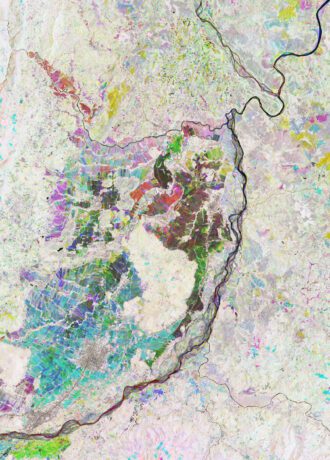 The heart of the Nueva Vizcaya Province on Luzon, the largest and most populated island of the Philippines, shows up brightly in this Copernicus Sentinel-2 false-color image.
The heart of the Nueva Vizcaya Province on Luzon, the largest and most populated island of the Philippines, shows up brightly in this Copernicus Sentinel-2 false-color image.
The colors in the image are due to it being a multitemporal composite made up of three Copernicus Sentinel-2 images acquired with the mission’s near-infrared channel over a period of 10 months. Different colours have been assigned to each acquisition: red to an acquisition in May 2022 during the hot dry season, green to one in September 2022 during the wet season, and blue to one in March 2023 in the cool dry season.
This combination highlights different features, such as crop types and changes that occurred between acquisitions that show the different growth stages.
A patchwork of colorful agricultural fields stand out in the centre to bottom left of the image. Areas in shades of red and green mean that the plant growth took place in May and September, respectively. Fields visible in shades of blue, which dominate the image, show that the plant growth occurred mainly in March during the cool dry season.
Most fields are left waterlogged all year round, probably for intensive rice production, with canals between them. Bright white areas, as in the middle of the fields, indicate zones covered with dense vegetation.
Straight lines and areas in grey depict roads and urban areas. These include Solano, the largest town in Nueva Vizcaya, visible in the bottom left surrounded by blue fields, and further south is Bayombong, the capital of the province.
The dark winding lines depict rivers, with the biggest, Magat River, flowing in a north-easterly direction across the image. Taking a closer look, different colors can be spotted along the course of the rivers. This is most likely due to changes in water volume and in the river paths at different times of the year.
Image Credit: Contains modified Copernicus Sentinel data (2022-23), processed by ESA

